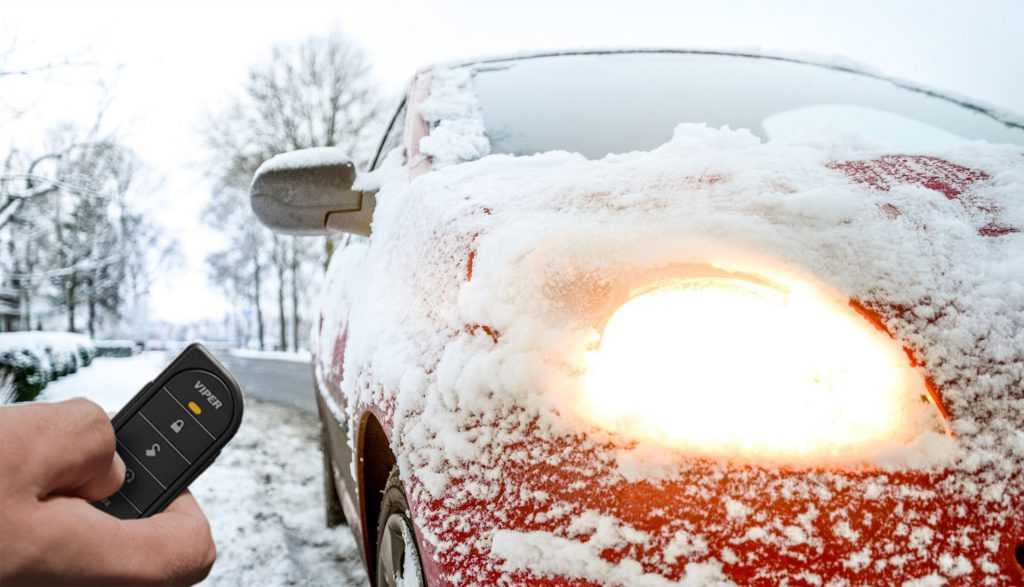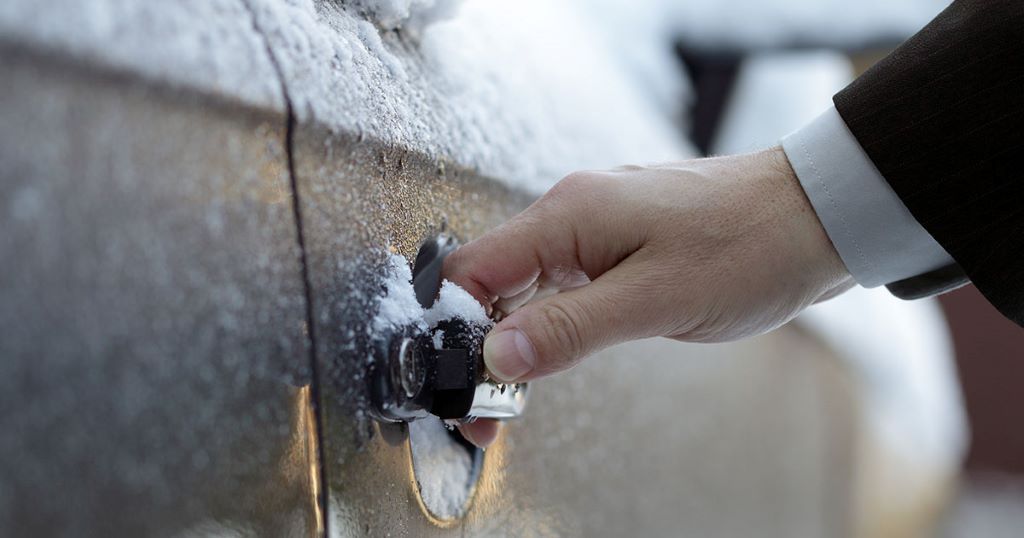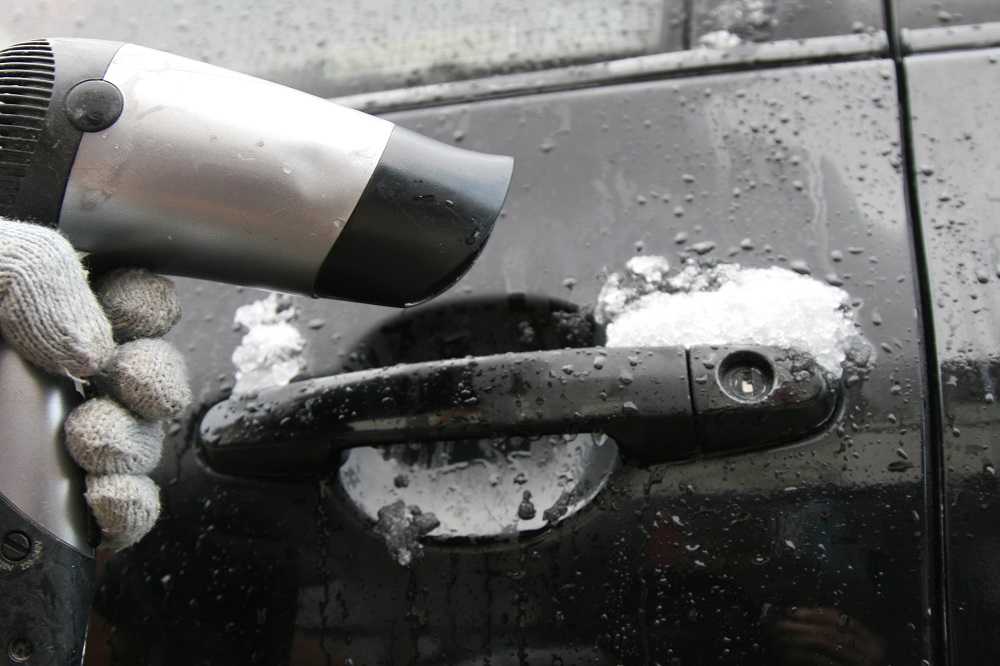Best Ways For How To Open Frozen Car Door
You need to know how to open frozen car door because even thin layers of ice can leave the latching mechanism and door handle useless.
Your car can show dozens of problems during winter and a frozen shut door is one of them. It’s more annoying than dangerous and happens a lot in the morning after a freezing night. In most cases, the morning sun thaws the ice between the vehicle’s body and door.
The key challenge is opening the door without damaging any parts or scrapping the paintwork. Careful handling is also necessary to keep the weather stripping intact as ruining it will leak water inside.
Top Tips for How to Open Frozen Car Door
Want to learn some effective ways for how to open frozen car door? Here are some top tips for opening a shut door and getting you back to the road as soon as possible. You will never again have to stand helplessly beside your car on a chilly day.
Start the Car Remotely
It takes at least 10 to 20 minutes and is only applicable when you are not in a hurry.
Demanding no effort on your part but pressing the ‘ignition’ button on your key fob or car remote, it’s the easiest process for opening a frozen shut door.
The interior heat is supposed to melt the ice around the door, but it will not work for thick ice layers.

Use the Key Fob
If you can’t wait that long, try to open the door by using the key fob. You may need to press the ‘unlock’ button a few times as frosty weather may make the fob less responsive.
If that does not work, put the key (hidden inside the key fob) inside the lock and turn counterclockwise. It will work if the locks are not frozen.
Push the Door
When remote engine starting or key fob tricks don’t work, it happens because ice has frozen the handle or shut the door around the seal.
Apply pressure on the door by leaning against it. Be careful not to cause a dent. A thin ice seal can’t handle that pressure.
Try to open the door but don’t apply any force. If this trick does not work, move on to the next ones.

SEE MORE
Use an Ice Scraper
An ice scraper comes handy when a thick layer of ice is visible on the door and its edges.
Be aware that it cannot remove ice from the lock, inside the handle, and between the car body and the door. Also, careless use may damage the paintwork and trim.
A plastic spatula or a smooth plastic object will also work. Avoid using a metal utensil as it increases the chance of scraping.
After chipping the ice, push and pull the door gently to open it. If it still does not work, move to the next tips.
Melt the Ice with Heat
If chipping and scraping don’t work, ice must have gotten between the car and door seal. It needs to be melted, and lukewarm water can help.
Take lukewarm (not hot) in a bucket and pour around the handle and door seal. Repeat this a couple of times for a particularly thicker ice formation.
Keep a microfiber towel handy to blot the melted water on the handle and seal to prevent it from refreezing.
Also, insert the key to the keyhole (if required) as soon as possible after melting the ice because the tiny lock opening will refreeze quickly.
You can get a similar result by using a hairdryer or a heat gun. But you have to be extra careful because these electrical devices can blow air hot enough to melt the door handles and plastic trim.
Keep the hairdryer at least 3 to 4 inches and heat gun 6 inches away from the door surface to prevent such an accident.

Tip 1: Never use boiling or hot water as it can crack the window glass.
Tip 2: Using electronic devices around water can be risky, so you have to be very careful.
Apply a De-Icer
If pouring hot water or blowing hot air from a hairdryer seems risky, apply de-icer. This is a safer way to perform on how to open frozen car door.
Most hardware stores and gas stations are likely to have these anti-icing products. Make sure to purchase one that is not damaging to a rubber surface.
Spray the de-icer on the frosted areas and wait for a few minutes (follow the user instructions on the bottle). This substance not only melts the ice but also prevents ice formation for a certain period.
Whichever method works for you, don’t forget to start the engine immediately and run the car heater so it does not get frozen again.
FAQs on Open Frozen Car Door
1. Can using hot water damage my car’s door or paint?
Pouring hot water directly onto a frozen car door can indeed cause damage. The sudden temperature change can potentially warp plastic components or crack the glass.
As the water cools, it may simply refreeze, exacerbating the issue. It’s also possible for hot water to affect the paint’s finish over time, leading to discoloration or peeling.
2. Is there a risk of damaging the door seal by forcefully opening a frozen door?
Yes, attempting to force open a frozen car door can damage the door seal. The seals are designed to provide a tight closure to keep out moisture and noise.
Tearing or stretching the seal by pulling too hard can lead to leaks and increased road noise, as well as potentially costly repairs.
3. Can using a hairdryer to thaw a frozen car door cause electrical issues?
Using a hairdryer to thaw a frozen car door is generally safe, provided you use an appropriate extension cord and keep the electrical components away from direct exposure to snow or water.
Directing hot air too closely or for too long on one spot can damage the car’s paint or melt plastic components near the door.
4. Are there any preventative sprays that can prevent car doors from freezing shut?
Yes, there are commercially available sprays specifically designed to prevent car doors from freezing shut.
These products typically contain ingredients that repel water and prevent ice from bonding to the door and the seal.
Applying a silicone-based lubricant or WD-40 to the door seals can also offer a protective layer against freezing.
Check out this video from 1A Auto to get a tip to keep your doors from sticking again in winter!
5. How does the saltwater method work, and is it safe for the car?
A saltwater solution can lower the freezing point of water, effectively melting ice. While it can be used to unfreeze a car door, it should be applied sparingly.
Salt is corrosive and can lead to rusting of metal components and deterioration of the paint if used frequently or in large quantities.
6. Can the interior defrosting system help open a frozen car door from the inside out?
If you can access the inside of your car through another door, running the interior defrosting system can help warm the vehicle and gradually melt the ice from the inside out.
This method is safe for the car but can take some time to be effective, depending on the outside temperature and the effectiveness of your car’s heating system.
7. Is it safe to use a credit card or plastic scraper to break the ice around a frozen car door?
Using a credit card or plastic scraper can be effective for breaking through thin layers of ice around the car door without causing damage to the paint or door seal.
However, using excessive force or attempting this method on thick ice can break the card or scraper and potentially scratch the car’s surface.
8. What’s the best way to thaw a frozen lock if I don’t have a lock de-icer?
If you don’t have a lock de-icer handy, applying hand sanitizer to the key or lock can help. The alcohol in hand sanitizer lowers the freezing point of water and can melt the ice inside the lock.
Alternatively, gently heating your car key with a lighter and then inserting it into the lock can also thaw the ice.
So here’s how to open frozen car door! When dealing with one, it’s crucial to approach the situation with patience and use methods that won’t damage your vehicle.
Preventative measures, like applying protective sprays before the onset of cold weather, can save time and avoid the hassle of dealing with a frozen car door altogether.














